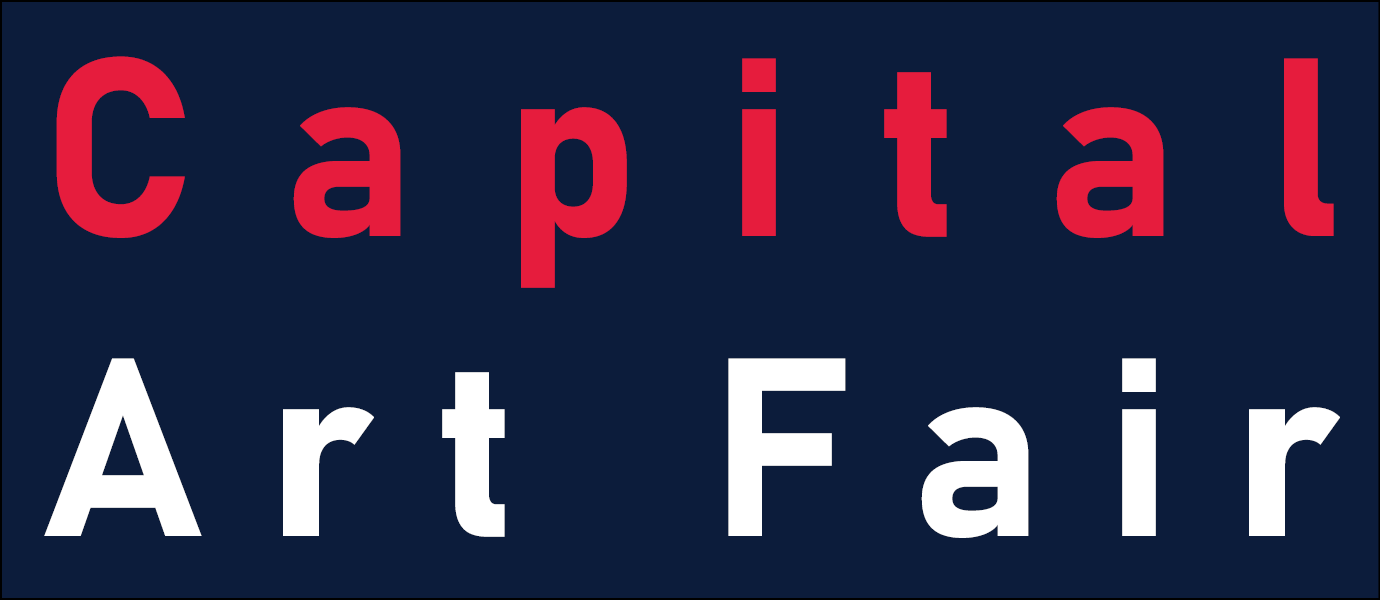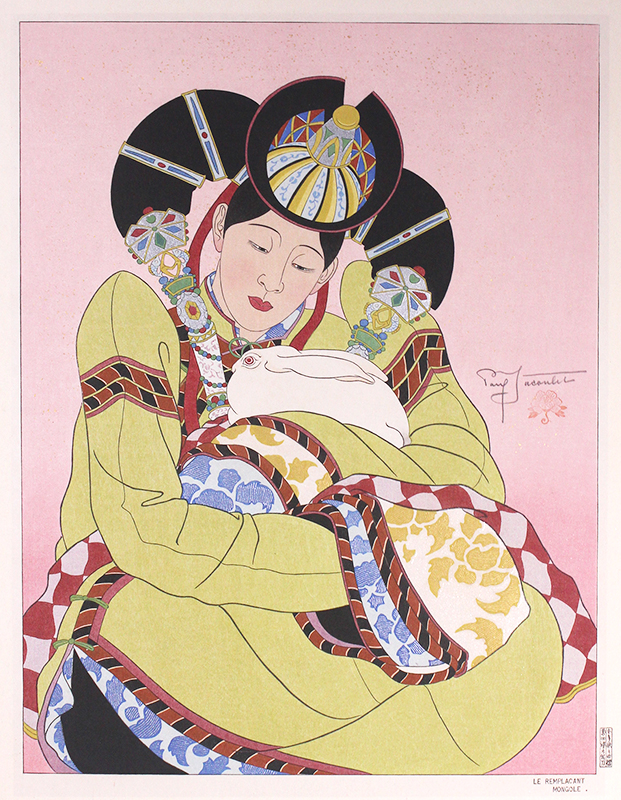Le Remplacant. Mongole is a color woodcut with colored mica, silver and bronze, and gauffrage (blind printing or embossment) and urushi (lacquer) that was published in 1955 by French artist Paul Jacoulet. It is pencil signed within the image and bears Jacoulet’s Peony seal. The reference is Miles 142 and is illustrated on page 81. The blocks were carved by Kentaro Maeda and the printer was Tetsunosuke Honda. Le Remplacant. Mongole is printed on ivory wove Japanese paper with Jacoulet’s elaborate PJ watermark. The image measures 15-1/2 x 11-7/8 inches.
According to Richard Miles, the model was a Chinese girl living in Seoul who had recently lost her baby. Her pet rabbit was a poor substitute, but it gave Jacoulet an idea for an image that has grown steadily more popular since his death. This same girl was also the inspiration for his color woodcut Les Jades (Miles no. 63).
Paul Jacoulet was born in Paris, France on the 23rd of January, sometime between 1896 and 1902 (accounts vary). When he was four-years-old, his family moved to Japan, where his father worked as a language tutor to young aristocrats being groomed for careers in the Japanese military.
As Jacoulet’s childhood was dominated by his poor health, he had private tutors who gave him lessons in painting, drawing, music, and calligraphy. Jacoulet developed and refined his language skills to including Japanese, French and English. According to Richard Miles, Jacoulet became an accomplished linguist, calligrapher, watercolorist, and musician, mastering the western violin and the Japanese samisen.
At the age of twenty, Jacoulet became an interpreter for the French Embassy in Tokyo which he found exceedingly boring. He sought entertainment in the world of Noh drama and Bunraku puppetry, cabaret, and sumo matches. His father died fighting for the French in World War I and he and his mother survived the September 1923 devastating earthquake that leveled Tokyo. Amid the dust and destruction, Jacoulet decided to become an artist.
He made numerous trips to Paris where he studied the paintings of masters such as Egon Schiele and Henri Matisse. With the financial support and blessings of his mother, Jacoulet set sail for the South Seas in 1929. This was the first of many trips Jacoulet undertook to explore the world while sketching and photographing the landscape and the people. Jacoulet turned to the fine artist and woodblock carver Kazuo Yamagishi to carve his blocks and his first color woodcuts were published by Junji Kato in 1934. After his first series of prints were published, Jacoulet became his own publisher and engaged Japan’s finest carvers, Kentaro Maeda and Kazuo Yamagishi. Jacoulet would review the pulled impressions and discard any that lacked absolute excellence. He experimented with techniques involving lacquers, embossing, mica and metal pigments, and with powdered semi-precious stones. However, in an unusual turn from tradition, he credited the carvers and printers by including their names in the margins of the prints.
The 1930s were Jacoulet’s most creative years and he began selling his woodcuts by subscription and his orders determined the size of his editions. By the 1940s, Jacoulet’s world began to unravel. His mother died in 1940 in Korea, the foreign local collectors of his work began fleeing Japan, and after the Japanese attached Pearl Harbor he was watched closely by the Japanese government for any signs of espionage.
Jacoulet was able to survive the war and set himself up for a comfortable life after the war. He traveled around the world via airplane and boat and even strolled across the U.S. border from Canada near Niagara Falls. During his last years, Jacoulet continued to produce woodblock prints.
Paul Jacoulet died on 9 March 1960 in Karuizawa, Nagano, Japan.



